7 Nights / 8 Days
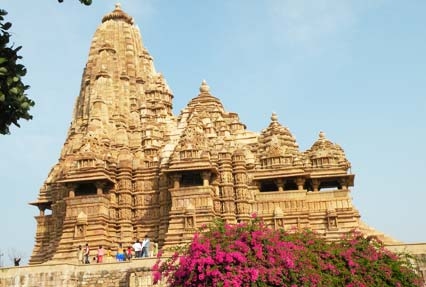
On your arrival at Delhi, you will be welcomed by our representatives at airport and transferred to your hotel. Rest of the day will be at leisure. Stay overnight at the hotel in Delhi.
Delhi: A Transition through Time - As you walk along the narrow by lanes of this city of dreams, tread softly. Every crumbling wall has a story to tell. Every yesterday is replete with history. Rulers have come and gone. The city has lived through wars and resurrection, repeatedly rising from the ashes. Cradling civilizations since times immemorial Delhi goes back hundreds of thousands of years back into time.
Stone tools belonging to early Stone Age were discovered from the Aravalli tracts in and around Anangpur, the Jawaharlal Nehru University Campus, the northern ridge and elsewhere - evidence that the Early Man lived here. Excavations at Mandoli and Bhorgarh in east and north-west Delhi respectively have thrown up remains of chalcolithic period dating back to 2nd millennium BC, 1st millennium BC as well remains of 4th-5th century AD have been traced here. The excavations of the ancient mound of Indraprastha, capital of the Pandavas, located within the fold of the sixteenth century Purana Qila revealed evidence of continuous habitation of the site for almost 2500 years. According to the Mahabharata, the Pandavas founded their capital Indrapratha in the region known as Khandava-prastha. Delhi was also witness to the glories of the Maurya Empire during 3rd century BC. The Ashokan edict engraved on a rock in East of Kailash as well as remains found in Purana Quila excavations belonging to the Mauryan period point to Delhi's importance during this era.
The first city of Delhi, Lal Kot was founded by the Tomar ruler Anangpal, in the 11th century. It was extended to Qila Rai Pithora by King Vigraharaja IV (Circa 1153-64). Qutbuddin Aibak became Delhi's first Sultan in 1206 and laid the foundations of the Qutb Minar, India's tallest stone tower at the site of the first city of Delhi subsequently the kings of the Sultanate dynasties, Khaljis, Tughluqs Sayyids and Lodis continued to build. New cities as Delhi grew. The second city around Siri by Alaud-Din Khalji (1296-1316); Tughlaqabad, the third city built by Ghiysud-Din Tughlug (1321-51); Firuzabad, the fifth city of Delhi, is now represented by Kotla Firuz Shah, founded by Firuz Shah Tughluq (1351-88). It was Humayun who laid the foundations of the sixth city - Dinpanah. This was destroyed and reconstructed as the Purana Qila by Sher Shah Suri however, it was the Mughals who took Delhi to the zenith of architectural glory.
While some construction activities did continue during the reign of Akbar (1556-1605) and Jehangir (1605-27), it was Shah Jehan (1628-58) who built the seventh city, Shahjahanabad which remained the Mughal capital until 1857. The British in 1911 shifted the capital of India to Delhi. The eighth city of New Delhi took shape in the imperial style of architecture. From then to now Delhi continues to throb with vitality and hop. The ruins and ramparts still stand tall in dignity - and amidst them rise modern buildings and giant skyscrapers. It's a breathtaking synthesis of yesterday and tomorrow, the holding on to the past and surging ahead to the future.
After breakfast at hotel, enjoy a daylong sightseeing city tour of Delhi. Visit the famous historical monuments of Delhi such as Qutub Minar, Raj Ghat, Jama Masjid, Red Fort, India Gate, Rashtrapati Bhawan, Humayun Tomb to name a few. Enjoy a cycle rickshaw ride from Jama Masjid to Chandni Chowk. Enjoy the Dances of India Show in the evening and retire early. Stay overnight at a hotel in Delhi.
Lotus Temple: It is a very recent architectural marvel of the Bahai faith. The Bahá'í Faith is the youngest of the world's independent religions. Its founder, Bahá'u'lláh (1817-1892), is regarded by Bahá'ís as the most recent in the line of Messengers of God that stretches back beyond recorded time and that includes Abraham, Moses, Buddha, Zoroaster, Christ and Muhammad. The central theme of Bahá'u'lláh's message is that humanity is one single race and that the day has come for its unification in one global society. God, Bahá'u'lláh said, has set in motion historical forces that are breaking down traditional barriers of race, class, creed, and nation and that will, in time, give birth to a universal civilization. The principal challenge facing the peoples of the earth is to accept the fact of their oneness and to assist the processes of unification.
Qutub Minar: The Qutub Minar made of red sandstone rising to the height of 72.5mts is an architectural marvel of the 13th century. Also a must is the visit to Ashoka Pillar dating back to the 5th century. Though made of iron it has with stood the weathers of time.A very interesting belief is assigned to this pillar- Stand with your back to the pillar, and if you can hold your hands around it, then make a wish and it will surely come true. Try it. You don't have to an archaeologist to find out about the past of your country. Simply visiting historic monuments helps you to understand it & can also lead you to grab some useful information, you never realized before. A distinct present from the past, Qutub Minar has inspired explorers and travelers through the ages. Qutb-u'd-Din Aibak laid the foundation of Qutab Minar in AD 1199 for the use of Mu'azzin to give calls for prayer and raised the first storey, to which were added three more storeys by his successor and son-in-law, Shamsu'd-Din Iitutmish. Viewing it is a truly surreal experience as Qutub Minar is still the highest stone tower as well as one of the finest Islamic structures ever raised in India. It is covered with intricate carvings and deeply inscribed verses from the Koran.
Beautiful calligraphy adorns the adjacent edifices. The tower has five distinct storeys, each marked by a projecting balcony. The first three stories are made of red sandstone, the fourth and fifth of marble and sandstone.
India Gate: India Gate is constructed as a memorial and was built in the memory of 90,00 soldiers who laid down their lives during world war I. Located at Rajpath, India Gate is 42 m high and is popular relaxation area during the summer evenings. India Gate also act as popular pinic spot during winter. Also known as the All India War Memorial, India Gate was designed and constructed by Lutyens. He was the one who is considered the chief proclaimer in designing the New Delhi plans.
A tour of Lutyens’ Delhi just has to kick off with the stately India Gate at the east end of the broad Janpath (earlier Kingsway) that leads to the Rashtrapati Bhawan. Another additional 13,516 names engraved on the arch and foundations form a separate memorial to the British and Indian soldiers killed on the North-West Frontier in the Afghan War of 1919. The foundation stone was laid by HRH the Duke of Connaught in 1921 and the monument was dedicated to the nation 10 years later by the then Viceroy, Lord Irwin. Another memorial, Amar Jawan Jyoti was added much later after India had said goodbye to its imperial rulers. It is in the form of a flame that burns day and night under the arch to remind the nation of soldiers who perished in the Indo-Pakistan War of December 1971. The entire arch stands on a low base of red Bharatpur stone and rises in stages to a huge cornice, beneath which are inscribed Imperial suns. Above on both sides is inscribed INDIA, flanked by MCM and to the right, XIX. The shallow domed bowl at the top was intended to be filled with burning oil on anniversaries but this is rarely done.
Red Fort: Emperor Shah Jahan built Delhi's most magnificent monument, the Red Fort and above is the red fort picture . In 1638 Shah Jahan shifted the Mughal Empire's capital from Agra to Delhi. A new royal palace known as Red Fort or Red Fort Delhi (Lal Qila) was constructed. It was begun in 1639 and completed in 1648. The name Red Fort comes from the massive red sandstone walls that surround it. The Red Fort has walls extending up to 2 kms. in length with the height varying from 18 mts. on the river side to 33 mts. on the city side. The Red Fort Delhi has two main entrances, the Delhi Gate and the Lahori Gate. The latter faces Chandni Chowk, the city's most crowded but diverse market. The Red Fort also houses the Diwan-i-Aam or the Hall of Public Audiences, where the Emperor would sit on a marbled paneled alcove, studded with gems, and listen to the complaints of the common people. The Diwan-i-Khas or the Hall of Private Audience, where private audiences were granted. This hall is made of marble, and its centre-piece used to be the Peacock Throne, which was studded with rubies and gems. Today, although the Diwan-i-Khas is only a pale shadow of its original glory, yet the verse of Amir Khusro “If there is Paradise on the face of earth, it is here, it is here, it is here" reminds us of its former glory. The Rang Mahal or the 'Palace of Colours' as it is known, holds a spectacular Lotus shaped fountain, made out of a single piece of marble, and housed the Emperor's wives and mistresses. The other attractions enclosed within this monument are the “Hammams” or the Royal Baths, the Shahi Burj, which used to be Shahjahan's private working area, and the Moti Masjid or the Pearl Mosque. Even today, the Red Fort (Lal Qila) is an eloquent reminder of the glory of the Mughal Empire. Shah Jahan when comes to Delhi after ruling Agra laid the foundation stone of Red Fort Delhi in 1618 and finally it's inauguration was done in 1647.
Jama Masjid: It is the largest mosque in India. The Jama Masjid stands across the road in front of the Red Fort. Built between 1644 and 1658, Jama Masjid is one of the last architectural works of the Mughal emperor Shah Jahan. The spacious courtyard of the Jama Masjid holds thousands of faithful. Jama Masjid is located on a mound in the heart of the old city and projects beautifully into the Old-Delhi skyline. Jama Masjid Mosque was built in red sandstone and marble by more than 5000 artisans. Originally called the Masjid-i-Jahan-Numa, or "mosque commanding view of the world", the Jama Masjid stands at the center of the erstwhile capital city of the Mughals, Shahjahanbad. The Jama Masjid was completed under the supervision of Saadullah Khan, the Prime Minister of Shah Jahan. A sum of Rs 10 lakhs was spent on the construction of the Jama Masjid. The Jama Masjid is built on a red sandstone porch, about 30 feet (10 m) from the level of the ground and is about 1400 square yards (1200 m²) in extent. The Jama Masjid has three gateways, four towers and two minarets. The gateways in the north and south are led by a fleet of steps. The main entrance is on the eastern side facing the red fort. It was probably used by the emperors. The tower of the Jama Masjid is made up of five distinctive storeys. Each one of the storeys has a projecting balcony. The adjoining edifices are beautifully done with calligraphy. The first three storeys of the Jama Masjid tower are made of red sandstone and the fourth one is made of marble, while the fifth is made of sandstone. The Jama Masjid is covered with intricate carvings and has verses inscribed from the holy Koran. The grand Red fort (Lal Qila) stands on the eastern side of the Jama Masjid. The main prayer hall of the Jama Masjid is made up of high cusped arches and marble domes. The cabinet in the north gate of the Jama Masjid contains a collection of Muhammad's relics - the Koran written on deerskin, a red beard-hair of the prophet, his sandals and his footprints, implanted in a marble block.
Chandni Chowk: The antiquity of the main market area of Chandni Chowk has rendered it a venerated place in the markets of Delhi. It is said that it was once lined with beautiful fountains. However, with time, it grew as crowded as it is today. Situated opposite the Red Fort, Chandani Chowk hous es the Digambar Jain Temple, Fatehpuri Mosque - built by the wives of Shah Jahan - and Sunheri Masjid. It was from here that the troops of Nadir Shah started their mission of plundering and massacring the 'infidels' at Delhi. One of the most prominent wholesale and retail markets of India, Chandni Chowk is more than 300 years old. It was established in 1650, when Mughal Emperor Shahjahan shifted his capital from Agra to Delhi, as an accompaniment to the fort. Jahanara, the Emperor's favorite daughter, is credited with designing this market, where an arcade of shops was built in a half-moon shape around a pool. It soon budded into a prosperous trading center and branched into a number of by-lanes and soon stretched from the Fort to Fatehpuri Mosque. A canal known as Faiz Nahar, renovated by Ali Mardan Khan, is said to have run through the entire length of Chandni Chowk, providing water for both drinking and irrigation, but it went into disuse later. Besides the Red Fort situated nearby, one can also visit the famous Chawri Bazaar. It is one of the narrowest, busiest and most prosperous trading centers of Delhi, dealing in iron and hardware, paper, utensils of brass, copper and stainless steel. You can see traditional framework of Chandni Chowk consisting of 'Havelis', 'Kuchas' & 'Katras'. Visit the seven major Hindu and Jain temples, two Churches, three Mosques and two Gurudwaras in the area. These places of worship include Sri Digambar Jain Lal Mandir, Jama Masjid, Gurudwara Shish Ganj, Gauri Shankar temple and Sunahari Masjid.
After breakfast at the hotel, get driven to Jaipur- the pink city- by surface. Check in at a hotel on arrival at Jaipur. Enjoy an afternoon sightseeing city tour of Jaipur. Visit the famous City Palace, Jantar Mantar and Hawa Mahal. In the evening proceed to Chokhi Dhani, an ethnic village. It is one its own kind, each of the detailed work in the village tells you about the culture and tradition of Rajasthan. It could be Camel Rides, Elephant Rides, Tonga Rides, Bullock Cart Rides, Bow n Arrows, Turbans or Food, it will make you feel a KING. Dinner and cultural program will be organized for you at Chokhi Dhani. Return to the hotel for overnight stay.
Hawa Mahal: Hawa Mahal was built in 1799 by Maharaja Sawai Pratap Singh, Hawa Mahal is the most stunning sight in the city of Jaipur. The palace, part of a huge complex, overlooks one of Jaipur's main streets and was originally constructed to offer women of the court a vantage point, behind stone-carved screens, from which to watch the activities taking place in the bazaar and the surrounding streets. Hawa Mahal Jaipur five-story, pyramid-shaped structure is made up of small casements, each with tiny windows and arched roofs with hanging cornices, exquisitely modeled and carved. Its façade makes Hawa Mahal look more like a screen than a palace. Its top three stories are just a single room thick but at the base are two courtyards. It is a fifty-foot high thin shield, less than a foot in thickness, but has over 900 niches and a mass of semi-octagonal bays, carved sandstone grills, finials and domes, which give this palace its unique façade. Hawa Mahal or Hawa Mahal Jaipur is also popular as "Palace of Winds" and it is designed by Lal Chand Usta and this name of the palace is given because Hawa Mahal has about 953 windows through which wind or (hawa) flows and keep the palace cool. Jantar Mantar: Jantar Mantar at Jaipur is the largest stone observatory in the World and this feature makes it, a special destination for a traveler. Jantar Mantar of Jaipur is one of the five astronomical observatories built by Maharaja Jai Singh, the founder of Jaipur. During the period between 1727 and 1733, Jantar Mantar took its form and structure.
City Palace: City Palace forms one of the most famous tourist attractions and a major landmark in Jaipur. The beautiful palace was built by Maharaja Sawai Jai Singh during his reign. Among the various forts and palaces of Jaipur, City Palace stands apart, with its outstanding art and architecture. City Palace complex covers a huge area, which is divided into a series of gardens, courtyards and buildings. Initially, Raja Jai Singh built the outer wall occupying a huge area. The additional grand buildings were constructed later by the succeeding rulers. A part of the exquisite Palace still makes home for the former Maharaja/ King. The premises consists several buildings like Chandra Mahal, Mubarak Mahal, Mukut Mahal, Maharani's Palace, Shri Govind Dev Temple and the City Palace Museum. One would come across the Mubarak Mahal, as one enters the first square. Mubarak Mahal was built by Sawai Madho Singh in the 19th century to entertain his guests. Today, it has converted into a costume gallery, which displays royal attires of the Kings. After crossing the first square, a beautiful gateway welcomes to Diwan-I-Khas, a hall meant for private audience. It has two sterling silver vessels on display and they are acclaimed to be the world's largest silver vessel. These vessels were made for Maharaja Sawai Madho Singh II to carry water from River Ganga to drink on his trip to England. Diwan-I-Aam, which was meant for public audience, forms the other attraction of this courtyard. At present, it makes an art gallery showcasing enthralling painted ceilings and rare ancient handwritten original manuscripts of Hindu scriptures. In the series, Maharani's Palace, which was meant for royal queens, has been converted into a museum, showcasing weapons dated back to 15th century. Chandra Mahal is essentially regarded as the best part, out of the whole tour to City Palace. It has seven stories and each story is known by a different name. The topmost story is known as Mukut Mahal. The wonderful architecture of this Palace with delicate paintings, mirror work on walls and floral decorations, makes it a "must-see" for every visitor. In the present day, this palace serves as the residence of ex-ruler. Badal Mahal stands opposite to Chandra Mahal and while crossing the path, one would find Govind Dev Ji Temple between them. Above all these, the Palace also offers delicacies in its multi cuisine restaurant. To sum up, the City Palace is a structure of historical importance and a souvenir of the regal past. The palace, with its royal grace stands as a symbol of magnificence. All these features of City Palace leave the tourists with no other option, but to visit it.
Birla Temple: Birla Temple forms one of the major attractions of Jaipur. Birla Temple of Jaipur looks stunning, when it is brightly lit in the night. Birla Mandir, in pure white marble, dominates the skyline of southern part of Jaipur. The enormous temple was built during the year 1988, by Birla Group of Industries, one of the business tycoons of India. The Temple is dedicated to Lord Vishnu (Narayan), the preserver and his consort Lakshmi, the Goddess of wealth. Due to this reason, Birla Temple is also known as Laxmi Narayan Temple. The Birla Mandir is situated just below the renowned Moti Dungri Fort. Built in a contemporary manner, Laxmi Narayan Mandir covers the vast lands of the city of Jaipur. The temple stands erect on a raised platform, at the footsteps of the Moti Dungri Hill. Birla Mandir is constructed in the finest quality of white marble. The three huge domes of the temple represent three different approaches to the religion. The beautiful white marble temple mesmerizes the onlookers, when it glows at night. The attractive stained windows glass windows of the temple depict scenes from Hindu Mythology. The idols of the temple look so real as if, they would utter a word just now. Amongst all the idols, the marble idol of Ganesha is a masterpiece which looks almost-transparent. The idols of Lord Vishnu and his consort, Lakshmi attract the attention, being made out from one piece of marble. The temple also portrays great historical achievers, philosophers and religious saints such as Socrates, Zarathustra, Christ, Buddha, and Confucius. The Laxmi Narayan Mandir is a modern architectural marvel, surrounded by lush green gardens. The fascinating exteriors of the temple are carved splendidly with beautiful sculptures based of mythological themes, while the interiors have a large marble panel portraying mythological events. The Birla Temple has a museum too, which showcases the ancestral valuables of the Birla family. Birla Mandir / Laxmi Narayan Temple are a masterpiece of art and tourists should not miss this architectural spiritual heritage on their trip to Jaipur.
Chokhi Dhani: Capturing the spirit of Rajasthan and ensuring the perfect Rajasthani experience is Chokhi Dhani, a unique Village Resort. Chokhi Dhani literally means a “fine hamlet” i.e. a quintessential village that offers an ideal pastoral experience. Away from the urban life the quaint mud and thatch dwellings in the resort give the right blend of traditions - modern amenities in typical ethnic environmen t. An ideal place for a perfect vacation is Chokhi Dhani Resort and what makes it so?... Without further contemplation it is the multiple facilities fulfilling all needs of guests. Chokhi Dhani has incorporated all that is needed to make a guest’s stay, a memory. Its continual improvement system always maintains the standards. So guests may rest assured that their comfort is in right hands. Chokhi Dhani Resort literally meaning the "Fine Hamlet" is a 5 star Ethnic resort, the only one of its kind in the country. With quaint mud & thatch dwellings set in sprawling acreage of land, it has 65 cottages, 8 Haveli Suits, 4 Conferences Halls, Bindola - the ethnic restaurant, Aarogosa - the multicuisine restaurant, Kesar Kyari - outdoor barbeque, Chaupal, Chandi Mahal Bar, Rhun Jhun - Discotheque cum bar, Kesariya - The Sansha Spa. Embedded with the richness and variety of Rajasthani culture is Kotri, Chokhi Dhani’s Lobby. It brings a churn of the ethnicity that lies in Rajasthan- bamboo net ceilings, mud plastered walls, paintings, murals, beautifully carved furniture and artifacts.
After your breakfast at the hotel, enjoy a morning excursion to the famous Amer Fort. Enjoy an elephant ride up to the Fort. Later proceed to Agra by road. En-route visit the historical town of Fatehpur Sikri, also known as the “Ghost City”. Its gate, Bulund Darwaza, the largest gateway in the world is the main attraction of the town. Check in at a hotel on arrival at Agra. Stay overnight at the hotel in Agra.
Amer Fort: Amber Fort is located in Amber (Jaipur), which used to be the capital of the Kachhwaha clan, till Jaipur was made the official capital in 1727. The Amber Fort looks stunning, all-built in white marble and red sandstone. To add to its charm, Maotha Lake makes its foreground. The crystal mirror image of the Fort, on the still waters of the lake, seems to be a beautiful illusion. Amber Fort is usually pronounced as Amer Fort. In 1592, construction of the Fort was started by Raja Man Singh I. However, the Amber Fort took its present form during the reign of Raja Jai Singh I. The outer appearance of the Fort, being rough and craggy is totally different from its core. The interior of the Fort provides a soothing and warm ambience, which is least expected from its outer appearance. The marvelous decoration of the Amer Fort is influenced by both, the Hindu and Muslim manner of ornamentation. Exquisite paintings of hunting scenes on the walls depict the temperament of the Rajputs, who were adventurous, revolutionary and self-indulgent. The intricate carvings on the walls and ceilings simply astonish the visitors. The minute mirror work adds to the grand appearance and royalty of the halls. The Amer Fort undoubtedly captivates the tourists with its artistic quality of delicate work. The mighty walls guarantee the protection of the Fort against the invasion of the enemies. The Fort is divided into four subparts. Kali Temple, which is also known as Shila Devi Temple, forms the part of the Fort. It is renowned for its glorious past, huge silver lions and silver doors. The Hall of Public Audiences, Diwan-I-Aam is a pavilion with double row of columns. Ganesh Pol, another feature of the Fort, directs the way to the inhabited apartments of the King. The Hall of Victory, Jai Mandir has a stunning ceiling comprised of mirror work and an inlaid panel. The Fort has numerous other halls and pavilions with their own specific attraction. The best part of this tourist attraction situated on a crafty hill, is the royal elephant ride. The flawless beauty of the Fort can be enjoyed royally with an elephant ride. Amber/Amer Fort is the part of Jaipur and its royalty. A trip to Jaipur would be definitely incomplete, without the visit to this imperial Fort of Amber.
Fatehpur Sikri: The royal city at Fatehpur Sikri, situated 26 miles west of Agra, was built at the orders of the Mughal Emperor Akbar. While Akbar himself was illiterate, he took a keen interest in literature, architecture, and the arts. He is also reputed to be a very tolerant ruler, and the buildings at Fatehpur Sikri blended both Islamic and Hindu elements in their architectural style. One of the buildings even reflects the new syncretistic faith founded by Akbar, Din-e-ilahi, which though very short-lived remains a matter of controversy. Popular legend has it that since Akbar was without an heir for a long time, he made a pilgrimage to the renowned Sufi saint, Sheik Salim Chisti, to seek his blessings. When a son -- later to be known as Jahangir -- was born to him, Akbar named him after the saint as a mark of his gratitude and built the new capital to mark his birth. Construction of the new ceremonial capital, with its elaborate palaces, formal courtyards, reflecting pools, harems, tombs and a great mosque, commenced in 1571. A large number of masons and stone carvers worked hard on an area that was over two miles long and a mile wide; they used brilliant red sandstone available locally, which provides the buildings with much of their lustre. Shortly after the work was completed fifteen years later, it was realized that there was a lack of an adequate water supply and the pristine complex was abandoned. Fatehpur Sikri is now a World Heritage site. The Panch Mahal , or Palace of Five Storeys, and the Buland Darwaza, a massive gate which provides entrance to the complex, number among the finest specimens of Mughal architecture, and it is even arguable that Fatehpur Sikri is the greatest accomplishment of Mughal architecture, surpassed only in reputation but not in its beauty and the awe it inspires by the Taj Mahal. The cultural politics of the site remains to be written: perhaps the mammoth chess board, where human figures were used as chess pieces and moved at the emperor's will, provides a cue.
After your breakfast at the hotel, enjoy a sightseeing tour of Agra. Visit the magnificent Taj Mahal, probably the most beautiful monument in the world. Taj Mahal, a symbol of love and romance, was built by the Mughal emperor Shah Jehan in the loving memory of his beloved wife Mumtaj Mahal. Later in the day visit the magnificent and majestic Agra Fort. After Agra Fort we visit the Tomb of Itmad-ud- Daulah. This building is also called the Baby Taj because its interiors are decorated in a manner similar to the Taj Mahal and some consider its decorations to be even better than the designs on the walls of the Taj Mahal. Stay overnight at the hotel.
Taj Mahal: It is regarded as one of the Seven Wonders of the World, and some Western historians have noted that its architectural beauty has never been surpassed. The Taj is the most beautiful monument built by the Mughals, the Muslim rulers of India. Taj Mahal is built entirely of white marble. Its stunning architectural beauty is beyond adequate description, particularly at dawn and sunset. The Taj seems to glow in the light of the full moon. On a foggy morning, the visitors experience the Taj as if suspended when viewed from across the Yamuna river. Taj Mahal was built by a Muslim, Emperor Shah Jahan (died 1666 C.E.) in the memory of his dear wife and queen Mumtaz Mahal at Agra, India. It is an "elegy in marble" or some say an expression of a "dream." Taj Mahal (meaning Crown Palace) is a Mausoleum that houses the grave of queen Mumtaz Mahal at the lower chamber. The grave of Shah Jahan was added to it later. The queen’s real name was Arjumand Banu. In the tradition of the Mughals, important ladies of the royal family were given another name at their marriage or at some other significant event in their lives, and that new name was commonly used by the public. Shah Jahan's real name was Shahab-ud-din, and he was known as Prince Khurram before ascending to the throne in 1628. Taj Mahal was constructed over a period of twenty-two years, employing twenty thousand workers. It was completed in 1648 C.E. at a cost of 32 Million Rupees. The construction documents show that its master architect was Ustad ‘Isa, the renowned Islamic architect of his time. The documents contain names of those employed and the inventory of construction materials and their origin. Expert craftsmen from Delhi, Qannauj, Lahore, and Multan were employed. In addition, many renowned Muslim craftsmen from Baghdad, Shiraz and Bukhara worked on many specialized tasks. The Taj stands on a raised, square platform (186 x 186 feet) with its four corners truncated, forming an unequal octagon. The architectural design uses the interlocking arabesque concept, in which each element stands on its own and perfectly integrates with the main structure. It uses the principles of self-replicating geometry and symmetry of architectural elements. Its central dome is fifty-eight feet in diameter and rises to a height of 213 feet. It is flanked by four subsidiary domed chambers. The four graceful, slender minarets are 162.5 feet each. The entire mausoleum (inside as well as outside) is decorated with inlaid design of flowers and calligraphy using precious gems such as agate and jasper. The main archways, chiseled with passages from the Holy Qur’an and the bold scroll work of flowery pattern, give a captivating charm to its beauty. The central domed chamber and four adjoining chambers include many walls and panels of Islamic decoration. The mausoleum is a part of a vast complex comprising of a main gateway, an elaborate garden, a mosque (to the left), a guest house (to the right), and several other palatial buildings. The Taj is at the farthest end of this complex, with the river Jamuna behind it. The large garden contains four reflecting pools dividing it at the center. Each of these four sections is further subdivided into four sections and then each into yet another four sections. Like the Taj, the garden elements serve like Arabesque, standing on their own and also constituting the whole.
Early morning, get transferred to railway station for boarding your train to Jhansi. On arrival at Jhansi, a chauffer driven car will transfer you to Orchha in Madhya Pradesh. Orchha, a medieval city of India, was the capital of the famous Bundela Kingdom during 16th and 17th centuries. The place is known for its well-preserved palaces and temples. Visit the famous Orchha Fort, Temples and palaces. Enjoy your lunch at Orchha. Thereafter, we will proceed to Khajuraho, a world heritage site and a famous temple city of Madhya Pradesh. The temples of Khajuraho are known for their erotic sculptures all over the world. On arrival at Khajuraho, you will be transferred to a hotel. Stay overnight at Khajuraho
Khajuraho: The 9th to 12th century temples of Khajuraho is the evidences of the architectural geniuses during the times of Chandela dynasty. Situated in Madhya Pradesh, India, Khajuraho oozes with passion, eroticism, dance and music and other finesses of creative arts depicted in sculpture and images of the temples. The 85 temples were built in North Indian 'Nagara' style of architecture, though only 20 of them have survived the rough weather conditions over long years of time. The two richer distinctive groups of temples are the Western and Eastern group of temples. Temple town of Khajuraho is much different from any other temple city of India. It is not about religion and worshipping and deities. The temples of Khajuraho are instead famous for the eroticism etched on its walls in the form of sculptures. An amalgamation of science and art of architecture, these 10th-11th century temples have a very interesting legend behind them that connects them to the origin of Chandela dynasty. It is said that in a fit of passion and lust, the Moon God seduced and ravaged a beautiful Brahmin girls known as Hemvati, resulting in the birth of Chandravarman (the founder of the Chandela dynasty). Later, Chandravarman had a dream where his mother requested him to make a temple, which would reveal all aspects of the treasure of passion and erotic fantasy to the world.
History: The city was once the original capital of the Chandela Rajputs, a Hindu dynasty that ruled this part of India from the 10th to the 12th centuries. The Khajuraho temples were built over a span of a hundred years, from 950 to 1050. The Chandela capital was moved to Mahoba after this time, but Khajuraho continued to flourish for some time. The whole area was enclosed by a wall with eight gates, each flanked by two golden palm trees. There were originally over 80 Hindu temples, of which only 22 now stand in a reasonable state of preservation, scattered over an area of about 8 square miles (21 km²). Unlike other cultural centers of North India, the temples of Khajuraho never underwent massive destruction by early Muslim invaders between c. 1100-1400 AD. Due to overgrowth following their abandonment, a number of them survived to be discovered by the British in the 19th century. The colonials undertook the laborious excavation of the temples, which required no small amount of reassembly. Today, the temples serve as fine examples of Northern Indian architectural styles that have gained popularity due to their salacious depiction of the traditional way of life during medieval times. They were rediscovered during the late 19th century and the jungles had taken a toll on some of the monuments.
Architecture: The Khajuraho temples, constructed with spiral superstructures, adhere to a northern Indian shikhara temple style and often to a Panchayatana plan or layout. A few of the temples are dedicated to the Jain pantheon and the rest to Hindu deities - to God's Trio, Brahma, Vishnu and Shiva, and various Devi forms, such as the Devi Jagadambi temple. A Panchayatana temple had four subordinate shrines on four corners and the main shrine in the center of the podium, which comprises their base. The temples are grouped into three geographical divisions: western, eastern and southern. With a graded rise secondary shikharas (spires) cluster to create an appropriate base for the main shikhara over the sanctum. Kandariya Mahadeva, one of the most accomplished temples of the Western group, comprises eighty-four shikharas, the main being 116 feet from the ground level. Lakshmana temple at Khajuraho, a panchayatana temple. Two of the four secondary shrines can be seen. Another viewThese shikharas -- subordinate and main -- attribute to the Khajuraho temples their unique splendor and special character. With a graded rise of these shikharas from over the ardhamandapa, porch, to mandapa, assembly hall, mahamandapa, principal assembly hall, antarala, vestibule, and garbhagriha, sanctum sanctorum, the Khajuraho temples attain the form and glory of gradually rising Himalayan peaks. These temples of Khajuraho have sculptures that look very realistic and are studied even today.
After breakfast at hotel, we will proceed for a guided tour of the exotic temples of Khajuraho. Visit the temples of Khajuraho, world famous for its erotic sculptures that present a picture of eternal, spiritual and physical love. Stay Overnight at Khajraho.
After breakfast in the morning, you will get transferred to airport to board a flight to Delhi. On your arrival at Delhi, you will be received by our executives at international airport. Thereafter you board a flight for your onward journey or way back home.
Planning for holidays at your favorite destinations is the best thing when it comes to spending your free time with your friends, colleagues and families together. Travel Solution offers the best deals to various holidaymakers across the nation to witness the sizzling beauty of various destinations in India and overseas as well. We majorly serve as a prime tour operator wherein we provide several tour packages that cover various places that involves so much fun, thrill and excitement during the trip. We also provide plan your event and hotel booking services as well. Moreover, our expertise in offering car rental services has allowed us to gain a huge clientele in the city. Read More...

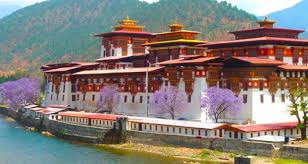 8D/7N
8D/7N
Bagdogra - Siliguri - Phuntsholing - Thimphu - Punakha - Paro - Samdrup Jongkhar
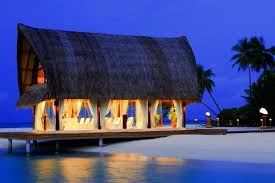 4D/3N
4D/3N
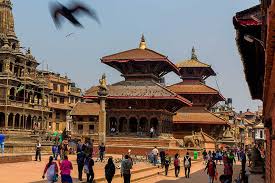 8D/7N
8D/7N
 7D/6N
7D/6N
 6D/5N
6D/5N
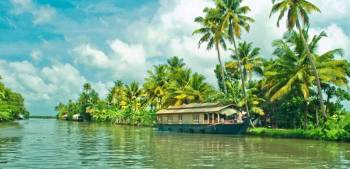 6D/5N
6D/5N
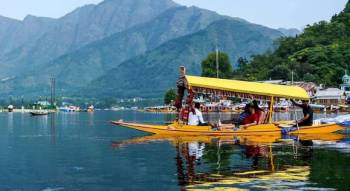 7D/6N
7D/6N
 5D/4N
5D/4N
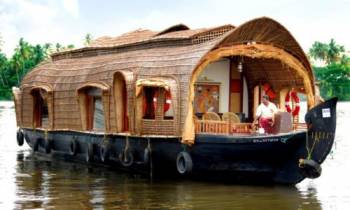 8D/7N
8D/7N
 8D/7N
8D/7N
 8D/7N
8D/7N
 8D/7N
8D/7N
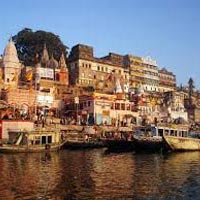 8D/7N
8D/7N
 8D/7N
8D/7N
 8D/7N
8D/7N
 8D/7N
8D/7N
 8D/7N
8D/7N
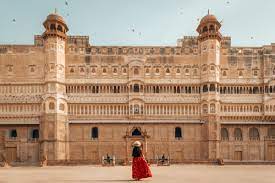 13D/12N
13D/12N
Rajasthan Tour Package 12 Night - 13 Days
Ajmer - Bikaner - Jaipur - Jaisalmer - Jodhpur - Mount Abu - Pushkar - Udaipur
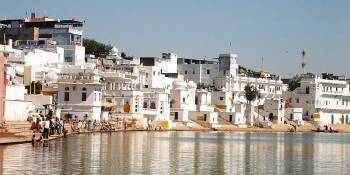 13D/12N
13D/12N
12 Nights Rajasthan Package From Jaipur
Ajmer - Bikaner - Jaipur - Jaisalmer - Jodhpur - Mount Abu - Pushkar - Udaipur
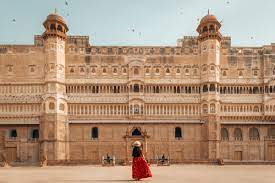 13D/12N
13D/12N
Rajasthan Tour Package 12 Night - 13 Days
Ajmer - Bikaner - Jaipur - Jaisalmer - Jodhpur - Mount Abu - Pushkar - Udaipur
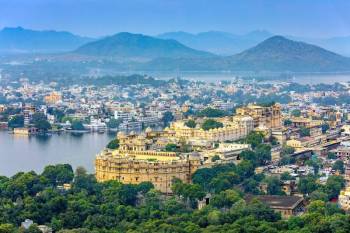 12D/11N
12D/11N
11 Nights 12 Days - Delhi Agra Rajasthan
New Delhi - Mathura - Agra - Jaipur - Ajmer - Pushkar - Udaipur - Mount Abu - Ranak..
 11D/10N
11D/10N
10 Nights Uttar Pradesh Tour Package Fro..
New Delhi - Agra - Prayagraj - Lucknow - Mathura - Varanasi - Ayodhya - Vrindavan -..
 10D/9N
10D/9N
9 Night - 10 Days Rajasthan Tour Package
Ajmer - Jaipur - Jaisalmer - Jodhpur - Mount Abu - Udaipur
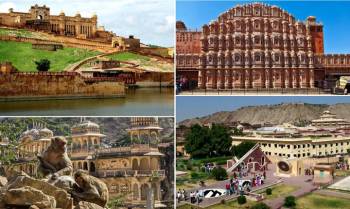 10D/9N
10D/9N
Ajmer - Udaipur - Mount Abu - Jodhpur - ..
Ajmer - Jaisalmer - Jodhpur - Mount Abu - Udaipur - Jaipur
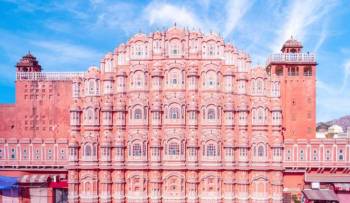 9D/8N
9D/8N
9 Days Jaipur - Ajmer - Udaipur - Mount ..
Ajmer - Jaipur - Jaisalmer - Jodhpur - Mount Abu - Udaipur
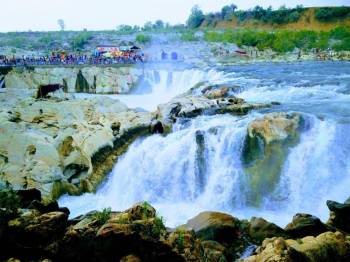 7D/6N
7D/6N
7Days Jabalpur - Kanha - Khajuraho - Gwa..
Gwalior - Jabalpur - Khajuraho - Kanha